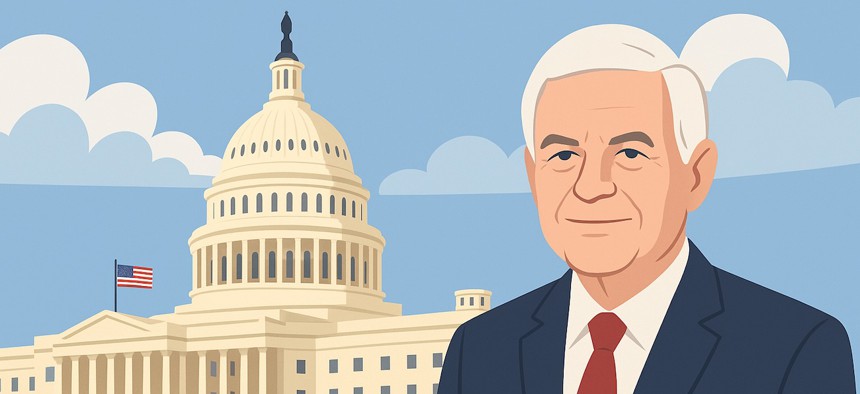
Illustration by OpenAI
I spent 50 years in government and here’s how to fix it
COMMENTARY | After serving under presidents from Johnson to Obama, David Mader has seen what works and what doesn’t in government and why improving it is about making it serve the public better, not running it like a business.
My career in public service began during college as a part-time Postal Service employee under the Johnson administration and concluded decades later as a political appointee at the end of the Obama administration. Over that span, I had the privilege of serving in every administration, Republican and Democratic alike, and witnessing firsthand how our government evolves to meet the changing needs of the American people.
As our nation approaches its 250th anniversary, it’s worth reflecting on how our democracy and its three branches of government have shaped the policies, laws and institutions that keep the country running day to day. I’ve seen numerous executive branch efforts, from Reinventing Government to the Program Assessment Rating Tool (PART) to multiple iterations of the president’s management agenda, each seeking to improve how government operates. And Congress, too, on a bipartisan basis, has enacted legislation aimed at enhancing government performance and accountability.
For as long as I can remember, there have been persistent calls to “run government like a business.” While the sentiment has merit — we absolutely should strive for greater efficiency and effectiveness — it’s essential to recognize a key distinction: government’s bottom line isn’t profit or shareholder value. It’s the fair, equitable and transparent delivery of public programs and policies agreed upon by both the executive branch and Congress.
As a career executive, I saw my job as designing business processes and organizational structures that implemented programs efficiently, measured outcomes effectively, and gave the public confidence that their tax dollars, voluntarily contributed by citizens and businesses alike, were producing results. In that sense, taxpayers are the government’s closest analog to shareholders.
Technology has long provided opportunities to improve the “how” of government. Artificial intelligence and automation now promise even greater gains, but only if we use them wisely. With future budgets constrained and a $37 trillion national debt, we must look critically at how we allocate resources and demand more transparency in the outcomes achieved.
Unlike private-sector firms, government can’t simply discontinue programs that underperform; doing so requires both legislative and executive agreement. That makes disciplined management practices all the more critical. As the old saying goes, insanity is doing the same thing over and over again and expecting different results. To avoid that fate, here are some practical steps we can take:
- What should be eliminated? Identify programs, activities and processes that no longer serve a clear purpose or duplicate efforts elsewhere. Eliminating what’s outdated or redundant frees resources for higher-value priorities.
- What should be optimized or automated? For the functions that remain essential, streamline and modernize them. Optimize workflows for efficiency and accountability and automate routine, necessary tasks wherever possible so staff can focus on mission-critical work.
- How can we build the budget from the bottom up? As part of this review, each agency should apply zero-based budgeting on a rolling five-year cycle. Rather than assuming last year’s budget as a starting point, agencies should justify each program and expense based on measurable outcomes and current needs. This data-driven approach will help decision-makers direct funding toward what works and rethink what doesn’t.
Taken together, these steps would instill a culture of continuous improvement and ensure that every taxpayer dollar is producing demonstrable results.
There are, of course, many other ideas worth considering. My hope is that these suggestions spark a broader conversation, one that honors our history while challenging us to make government more responsive, transparent and accountable to the people it serves.
David Mader is an executive advisor to Management Science and Innovation and former controller, Office of Federal Financial Management in the U.S. Office of Management and Budget.






